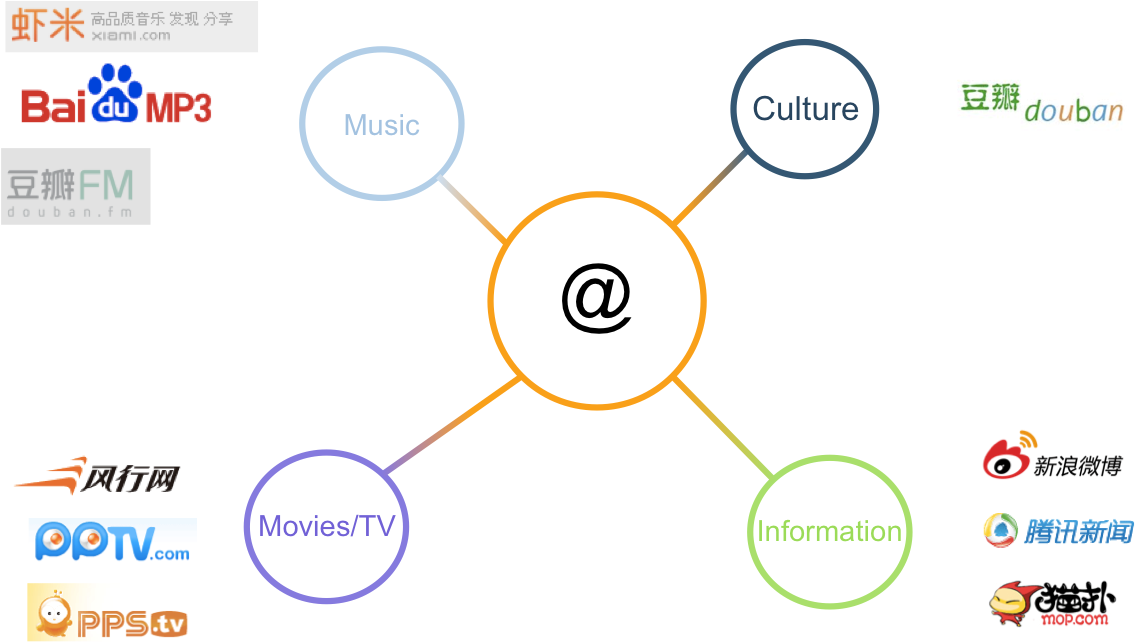

In this comprehensive report on brand marketing strategies, we consistently refer to the terms “teenagers” and “post 90s.” Although the year of birth may not be a perfect segmentation criterion (with individuals born in 89 and 91 potentially having more in common than those born in 91 and 96), we opt for the widely recognized terminology for clarity. The primary focus of our study revolves around Chinese youths aged 14 to 18, currently enrolled in junior high school or high school. Explore the nuanced strategies tailored to effectively engage and resonate with this specific demographic.
When crafting brand marketing strategies in China, brands are often confronted to the issue of generational differences. While differences between different generations of customers exist in every market, these differences are even more important in China. The nation’s breakneck speed of development over the last 30 years has created a fragmented society in which generational differences mean more than simple age gaps but refer to fundamental differences in life experiences and mindsets. For many brands, understanding these differences and designing multi-layered strategies to address each demographic group with the most relevant message is a pre-condition for success.
Navigating the landscape of brand marketing strategies in China becomes increasingly crucial in light of generational differences in customer behavior, particularly with the entry of the first cohort of post-90s university graduates into the job market last year. This unique generation exhibits distinct characteristics, with one of the most noteworthy being the paramount role of digital elements in shaping their behavior as individuals and consumers. Understanding and aligning strategies with these nuances is imperative for brands seeking resonance and relevance in the evolving market dynamics.

Labbrand was invited to talk about Chinese teenagers’ digital habits at the first Social Media Week in Shanghai, a 5-day conference on tech and social media in China. In order to prepare for the presentation, Labbrand’s market research and strategy teams went out to talk to Chinese teenagers and conduct video ethnography in front of Shanghai high schools. A subsequent focus group was meticulously organized to delve deeper into comprehending the pivotal role and perception of digital platforms within this demographic. This insightful initiative aimed to uncover nuanced insights that can shape and inform brand marketing strategies, recognizing the significance of understanding the digital landscape for the future success of many brands in China. Here is what we found:
Understanding how Chinese teens use digital starts with understanding why this generation is unique, how it differs from the generations before it and how it perceive itself and its place in modern Chinese society.
Our conversations with Chinese teenagers began by exploring their perception of their generation. What immediately emerged was a keen awareness of their uniqueness. Growing up in an environment marked by stability, continuous progress, and increasing prosperity, they recognize the distinctiveness of their life experiences compared to previous generations, especially the post-80s generation. This awareness shapes their self-perception as a generation that is more active, enthusiastic, forward-looking, open to change—whether in the form of new ideas or technologies—and eager to challenge the status quo. However, this sense of uniqueness comes with a flip side; they often feel misunderstood by the broader society, as if their concerns and experiences are not shared by the larger social body. Understanding these nuances is crucial for devising effective brand marketing strategies that resonate with the aspirations and challenges of this distinct generation in China.
Despite feeling misunderstood and different, Chinese teenagers do not harbor a desire for open rebellion. This nuance is crucial for Western marketers accustomed to social paradigms where rebellion against established institutions and previous generations plays a significant role in generational affirmation. Instead of seeking to overthrow their elders, Chinese teenagers desire attention, encouragement, and validation. Their aspiration revolves around having the breathing space to express and prove themselves. Importantly, they do not seek to break away; rather, they are cognizant of their own shortcomings, including fickleness and insufficient maturity. Understanding these nuances is pivotal for developing effective brand marketing strategies that resonate with the desires and challenges of Chinese teenagers.

A very interesting aspect of the way participants perceived their generation lies in the way they see their relationship with the internet: based on discussions, it appear that Chinese teenagers are not only extremely reliant on the internet but perceive themselves as being so. Discussions suggested that Chinese teenagers are highly aware of how important the web is in their daily lives to find relevant information, even compared to people of similar age in other countries.
The first key takeaway from conversations was that the web in all its forms is a constant presence in the life of Chinese teens. Web-enabled devices follow individuals throughout the day from sunrise, with many participants checking their social media accounts right after getting up, to sunset, some participants confessed to regularly falling asleep while surfing the web on their phones. In between, the web is used for many daily activities and also comes as a complement of dull or mundane activities such as homework.
Un-surprisingly, the web is the central hub of content consumption for everything from news to culture, music, videos, TV content etc… Nowhere is the role of the web as a mainstream source of quality, credible and innovative content more obvious than in web video. TV is fast loosing relevance in the eyes of most Chinese netizens and TV usage steadily declines with each new generation, a fact that was verified during our interviews with most participants consuming nearly all of their video content online. Unlike what we can see in other countries, web platforms in China operate in an environment in which competing sources of media and entertainment content are either few or fast loosing influence because of their perceived lack of relevance to modern habits.

Not only is Chinese web content extraordinarily rich and sophisticated but it is also very diverse. This represents an important change in China where many marketers used to addressed audience that has grown up in environment where sources of information and media content were few and conformity and uniformity were not only valued but more or less imposed. While we have not reached the level where sub-cultures are important enough to have a broad social impact, Chinese teenagers are nonetheless developing niche tastes, pursuing their personal interest and bonding with people over these interests on a hitherto unthinkable scale. This means that marketers addressing Chinese teenagers are talking to an audience that is extremely diverse, hence the need to go further in developing a more accurate understanding of different target groups.
Then, it is remarkable to see how important web platforms are in Chinese teenagers’ social lives. To a much greater extent than in the west, young Chinese netizens use web platforms not just to stay in contact with their close friends but also to actually deepen relationships with them and build new friendships through online exchange. This key characteristic of the Chinese Internet scene has been well documented and was verified by our study. One participant even declared that she would find it easier to get to know somebody online than offline since online allows for greater information sharing and intensity of exchange.
Finally, on a deeper, more sociological level, we see that the web is providing Chinese teenagers new ways of expressing themselves. This is again very important given that traditional Chinese education might not reflect much individuality or self-expression. Up to now Chinese teens effectively had very few channels for self-expression and definition. With the web however and especially the mobile web, Chinese teenagers have the tools to express both deep seated opinions on important topics but can also record and share their daily lives with the people who matter most to them. This emergence of new practices fuelled by modern digital channels and focussed on self expression brings about important changes in individuals’ perception of themselves and their relationship to society. Brands now have to talk to people who are used to talking too and integrate this when crafting web campaigns by injecting a participatory element into their digital communication strategy.
One of the key takeaways was the very important role of the mobile web in absolute and also relative to other web terminals. Quality smartphone are fast democratizing amongst the audience studied with most people interviewed stating that majority of classmates are smartphone users. This trend is doubtless fuelled by the fast pace of innovation maintained by local smartphone makers who frequently introduce low priced models that put quality smartphones within the reach of more and more people. It is interesting to note that smartphones are often purchased as a reward for good academic achievement and its acquisition can thus be seen as representing an important milestone in teenagers’ lives.
Mirroring the broader market, teens favour Apple, Samsung and HTC. From a tech perspective, it is interesting to note that not only is Android’s market share high but teen Android users appear to use their phone as intensively as iOS users. This only confirms the need for brands to pay greater attention to the (admittedly complex) local Android eco system.
The most used applications were games, instant messaging and micro blogging. Beyond usages, what really stood out was that for Chinese teens nowadays, mobile is not a secondary point of access to the Internet. For many (if not most) members of this generation, mobile is the main gateway to the web and the main reason for which the Internet is such a constant present in their daily life. Amongst the reasons for this is the role of mobile as a symbol of independence. Most Chinese teenagers do not possess their own computer and mobile represent their own personal device that allows them to escape parental supervision and circumvent parental rules on Internet use. Many participants shared stories of mobile allowing them to carry on their online activities after parents restrict access to the family computer.

Mobile also allows Chinese teenagers to satisfy their desire for self-expression. With the mobile web and camera features (photo editing apps are consistently amongst the most downloaded on Chinese app markets), Chinese teens can express themselves on the go, keep their friends posted about their activities and share exciting moments with those who matter most to them. Simply put, mobile has transformed many teens’ social media space into personal diaries that just aren’t that personal anymore.
A key point of focus of discussions was of course social media. We set out to understand not only what were the preferred platforms of this demographic but also how they use them and how open they are to interactions with brands on social media.
Conversations revealed that despite the hype around platforms such as Sina Weibo and to a lesser extent Weixin, RenRen or Douban; the undisputed leader in the social space remains QQ. All participants cited QQ as the social platform they spent the most time on. These teens have been using QQ since their first touched a computer and a big chunk of their online social life is built around Tencent’s (QQ’s parent company’s) eco-system. While QQ is primarily known as a live chat tool, its very rich social features (including the Q-Zone social network) make it compete with pure social networks on many levels. The lasting strength of QQ shows how strong Tencent’s position is with the target audience and how brands should pay attention to Tencent platforms (who often get less attention than they deserve in western media). Crafting brand marketing strategies attuned to Tencent’s ecosystem ensures brands align with the prevailing preferences of Chinese teens, facilitating more impactful and resonant engagement within this dynamic social milieu.

Behind QQ, the two other social networks most used by participants were RenRen and Sina Weibo. It is interesting to note RenRen’s enduring popularity amongst this audience (even though Sina Weibo is currently getting more attention from marketers and media) due to the platform’s perception as being more suited to exchanging with close friends as opposed to Sina Weibo which many participants saw as being too cluttered and better suited to finding online content and information.
Then, it is clear that the rising star in the social networking space is called Weixin (or Wechat as it is known in the west): the mobile chat/social network app has already broken the 200m members bar and is capitalizing on QQ’s eco system (users can seamlessly import their QQ contacts). For Chinese teens, Weixin is clearly becoming the dominant mobile platform and is even replacing text messages and voice calls to stay in touch with close friends. In the future we only see Weixin’s importance rising and brands who want to target a young audience should start thinking about how they can integrate this new platform into their marketing mix.

Other social platforms cited by participants include traditional forums/BBS such as Baidu Tieba 百度贴吧 and Tianya 天涯 who remain popular especially amongst girls to stay informed and participate in discussions about key topics of interest such as fashion or TV shows. Kaixin 开心 was mentioned by some but its popularity appears to be fading fast and lack of innovation in platform design has severely affected its appeal to teens.
In analyzing the social media habits of Chinese teens, a distinct dichotomy emerges, defining two categories of platforms that influence their online interactions. The first category encompasses platforms such as Weixin, RenRen, and QQ, predominantly employed for maintaining close friendships through activities like picture sharing, one-to-one or group discussions, and the coordination of real-world gatherings. Conversely, the second category includes platforms like Sina Weibo and BBSs, with Douban also falling into this classification, albeit with comparatively lower popularity among teens. These platforms primarily serve the purpose of content discovery and staying abreast of trending or personally relevant topics. While not universally clear-cut among all teens, this division holds significance for brands, shaping their approach to different social platforms based on the distinct usage patterns exhibited by Chinese teens. Crafting brand marketing strategies that align with these preferences ensures a more targeted and resonant engagement with this dynamic demographic in the evolving landscape of social media.
All in all it appears that social media time is scattered across different platforms. For this reason we advice brands to conduct case by case research into their target’s social media habits in order to allocate efforts and spending in an optimal way.
Beyond which platforms are used it is interested to look at how these platforms are used. Here again we see the role of digital as a medium for self-expression. Most Chinese teens appear to use social networks as space on which to build their online identity and tell their daily life stories by for example sharing pictures of seemingly mundane daily life-events and posting about their mood and feelings of the moment.
It is also interesting to note that Chinese teens perceive social media (and microblogs in particular) as extremely credible sources of information not only about “light” topics but also about important current affairs issues. This credibility of social media as not only a channel but a source of rich, credible content represents a huge opportunity for brands but also requires them to go beyond mere communication and adopt a more media organization-like vision.

Another important question is whether or not Chinese teens use social networks to interact with brands and what they expect from brands in the social space. Few of our participants followed brands on social networks and those who did only followed a few (brands that came up include Vancl, Watsons, Adidas and Sony). However, this apparent lack of interest for official brand content in no way means that they do not integrate social networks in their consumption behavior. Quite the contrary, they heavily rely on the social web to find product and brand information, gather user reviews and share their purchases with friends. Only they do not do so through official brand accounts. This seems to point to a clear opportunity for brands to better adapt their social media presence to the demands of Chinese teens, chief amongst which is quality, entertaining content.
With e-commerce and m-commerce spending rising exponentially and expected to reach respectively $265b and $15.3b in 2013 (McKinsey), we sought to understand whether Chinese teenagers were participating in the trend and how open they were to buying online.
Discussions suggest that Chinese teenagers are not yet very heavy e-commerce shoppers (although their online spending is probably higher than that of teenagers in other countries). They mostly use online channels to purchase very functional items or objects for which in-store contact is not of primary importance (such as books and certain electronic products).
The key reason for which Chinese teens’ e-commerce spending remains comparatively low is that they seem to still value retail experience. The process of going out, handling products in shop, discussing them with friends and walking away with their purchases is still important in their eyes.
Amidst the diverse landscape of consumer preferences and purchasing habits among Chinese teens, the prominence of e-commerce shines through, particularly in terms of choice and price advantages. Participants in our research acknowledged the allure of online platforms, with some revealing instances of regret after discovering lower prices for items purchased offline. Intriguingly, Chinese teens showcase a remarkable proficiency in e-commerce, often taking on the role of advisors for family members in selecting and completing online transactions. This adeptness suggests a strong likelihood that, as these teens mature, they will naturally evolve into avid and frequent users of e-commerce platforms. Crafting effective brand marketing strategies requires a nuanced understanding of these evolving consumer dynamics, positioning brands to engage proactively with the digital-savvy generation and align their marketing approaches with the preferences and behaviors that define their e-commerce experiences.

To comprehend how Chinese teens, and the future adults they will become, utilize digital platforms, it is imperative to delve into their “journey to purchase.” Notably, Chinese e-commerce habits diverge significantly from those in other nations, with social media serving as a pivotal gateway to online shopping. Social media platforms, particularly microblogs, play a central role in directing traffic toward e-commerce websites. Many narratives we encountered about online shopping experiences began with participants exploring products on a social media site and subsequently clicking on a Taobao link. For brands targeting Chinese teens in the online marketplace, a comprehensive understanding of the customer journey is essential, with due recognition of the influential role played by social media in steering e-commerce traffic. Crafting brand marketing strategies tailored to this unique digital landscape becomes crucial for brands seeking to establish a meaningful presence among Chinese teens.
Our exploration of teen mobile habits has revealed numerous insights about a demographic that brands cannot afford to ignore, whether they are currently targeting it or anticipating its transition into adulthood. The portrait that emerges depicts a population where digital engagement plays a crucial role as a social bond, a promoter of diversity, a means for self-expression, and a tool for consumption. Understanding the centrality of digital in the lives of teenagers is essential for brands seeking effective and resonant brand marketing strategies tailored to this dynamic and influential consumer segment.
Here are 5 simple, concrete brand marketing strategies for brands that are interested in leveraging digital channels more effectively to reach Chinese teenagers
Our findings mainly apply to T1 cities. This report is meant to provide a big picture view of teen digital habits and we encourage brands to conduct their own research to refine this view.
If you are interested in more information, please contact info@labbrand.com.
A Labbrand Group Company © 2005-2024 Labbrand All rights reserved
沪ICP备17001253号-3* Will be used in accordance with our Privacy Policy
To improve your experience, we use cookies to provide social media features, offer you content that targets your particular interests, and analyse the performance of our advertising campaigns. By clicking on “Accept” you consent to all cookies. You also have the option to click “Reject” to limit the use of certain types of cookies. Please be aware that rejecting cookies may affect your website browsing experience and limit the use of some personalised features.